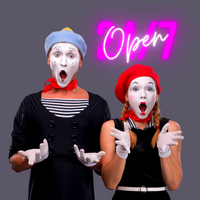Art Movement Context and Comparative Analysis
Art Description :
🖤 Artist Statement
by Gabriel
My artwork explores the thresholds that fracture and define us: where body meets mind, nature meets machine, mortality meets myth. Through collage and monochrome photography, I create symbolic portraits that merge the intimate with the archetypal, the visceral with the abstract.
Rather than literal representation, I seek emotional realism, mapping landscapes of turbulence, transformation, and memory. Photography is my starting point, but I disrupt its “truth” with digital layering, distortion, and fusion of anatomical, industrial, and organic elements. The result is a kind of emotional architecture: fractured identities and suspended narratives where the body itself becomes a canvas.
Figures often appear as fluid, hybrid beings, faceless or masked, not to erase identity but to show its fragility and constant reconstruction. They embody shared psychological landscapes shaped by memory, desire, loss, and oppression. By merging flesh with machine, bone with wire, wing with chain, I explore worlds where the human and non-human, natural and artificial, merge and dissolve.
Black-and-white tones strip away distraction, leaving shadow, light, and texture as a stage for contrasts: hope and despair, freedom and restraint, creation and ruin. Each work becomes a dialogue between inner and outer worlds, embracing contradiction and allowing tension and ambiguity to reveal deeper truths.
My practice draws from Surrealism, Dadaist photomontage, and Symbolist art, but I use these movements as starting points rather than destinations. My work mirrors the rhythm of contemporary life: layered, fast, contradictory, and always shifting in meaning. Influences include David Delruelle’s stark dreamscapes, Linder Sterling’s disruptive juxtapositions, and Wangechi Mutu’s hybrid figures. Yet my focus leans toward density, dissonance, and the construction of new symbolic languages.
I treat collage not as composition but as construction, building each piece like an architecture, balanced and held together by gravity. The figures I create shape space rather than simply occupy it. They act as vessels for ritual, reflection, and transformation, existing not as real or imaginary but as possible.
What matters to me is making images that hold weight emotionally, symbolically, and aesthetically. My work seeks to capture the fractured, reconstructed realities of our time and to create spaces where mystery, contradiction, and transformation remain alive.



